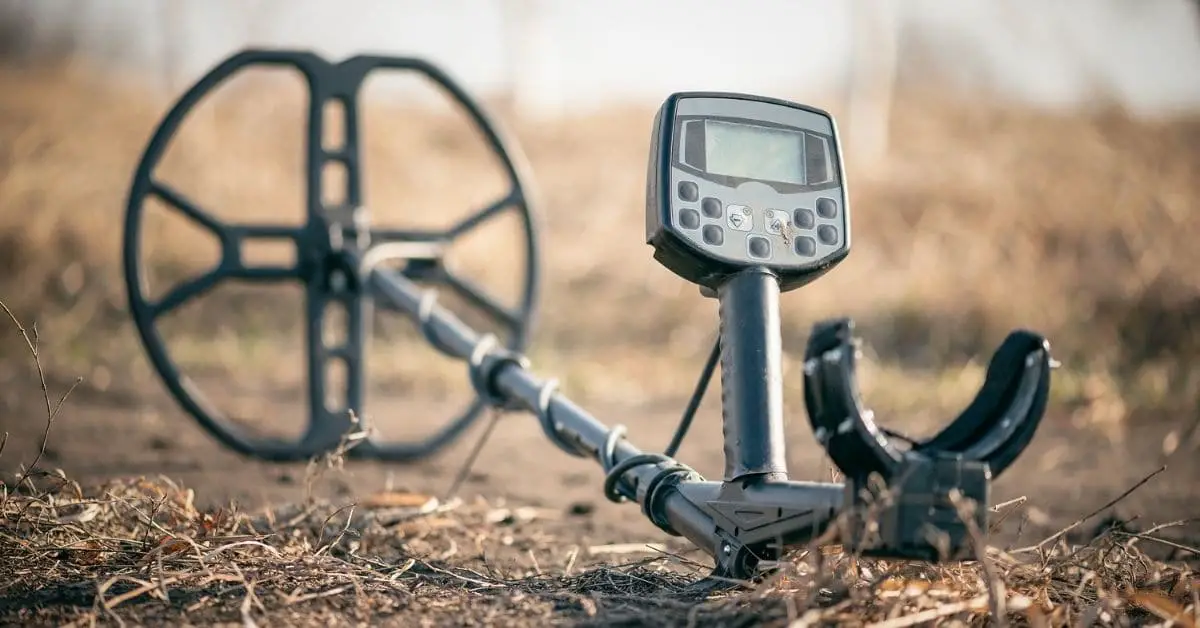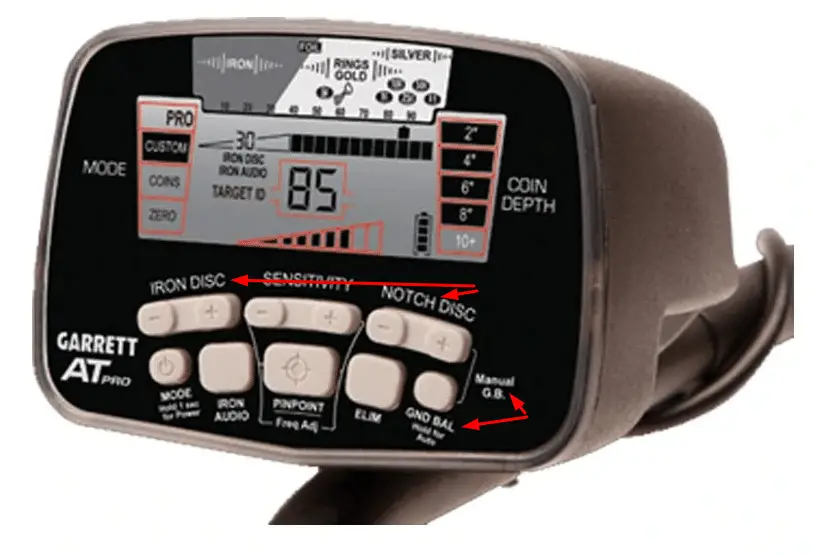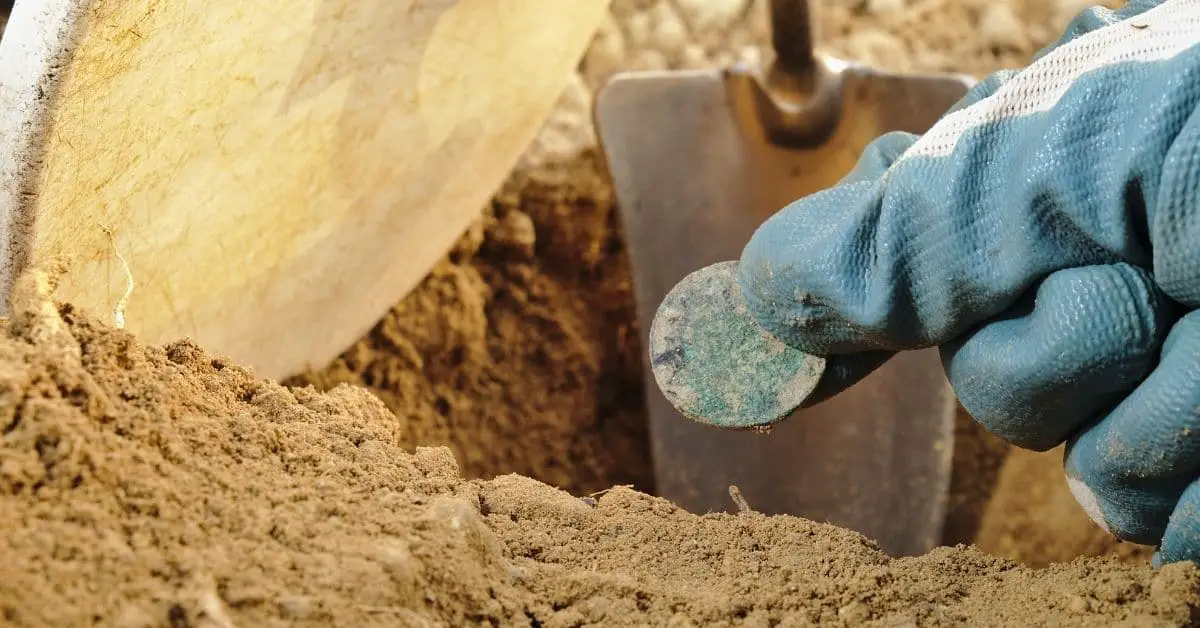When it comes to metal detecting, it is vital to do everything possible to ensure a successful outcome. Due to the mass of the ground you are normally covering, this can be a challenge. This means that various minerals, such as those found in wet beach sand or in red earth, can interfere with the metal detecting process.
Ground balance is a method used by metal detectors to eliminate the effects of mineralization that can interfere with locating a specific target. With ground balancing, the signals coming from the ground itself are silenced making it easier to focus on the target of the search. Keep reading to find out how to ground balance your metal detector for better results.
What is Ground Balance on a Metal Detector

There are three different ground balancing features that your metal detector may or may not have. You will need to check the owner’s manual of your particular metal detector to find out which ground balancing feature you have. In the following, we will be explaining each one of these features.
Automatic Ground Balance
Metal detector enthusiasts typically use a variety of metal detectors over the course of their experience. This is because when you are just starting out, it is important to have a machine that does most of the work for you until you learn more about the science behind the hobby.
Using the automatic ground balance is the easiest way to balance out the mineralization that can occur and cause interference. This type of metal detector setting analyzes the ground and determines the ground balance setting automatically.
Experienced detectorists sometimes use automatic settings, but this is more commonly used by beginners who haven’t mastered how to determine the best setting for ground balancing. This is because the automatic setting does not require much human interaction.
One of the biggest advantages of using a metal detector with an automatic setting is that it eliminates the need to constantly change the dials to adjust for various mineralization points. Since the machine has the control, it has a way to sense any changes and then automatically make adjustments as needed.
A disadvantage of using a detector with this setting is that it tends to track even the slightest gold particles which can create more interference. Additionally, if there is gold buried at a greater depth, it can be difficult to detect.
Manual Ground Balance
For those who are more adept at metal detecting, using more advanced techniques can make for a more exciting adventure. This is because you have the added challenge of ensuring that your ground balance settings are accurate enough to detect targets and not just the ground.
Using a metal detector with a manual ground balancing system is excellent for those detectorists who enjoy added control over the process. This means that as you are using your detector, you can manually adjust the settings as you see fit to get the best experience possible.
While this type of detector setting is not recommended for those, who are just beginning to learn the science behind metal detecting, more experienced detectorists prefer this option. This is because adjusting the setting and the detector coils requires more knowledge and understanding of what you are looking for.
Additionally, depending on the ability of your brand of metal detector, you may be able to set it to a higher frequency to find those targets that are smaller or buried deeper in the ground. Since those who use these types of metal detectors know what to listen and look for, they have the advantage of getting a more significant and, in some cases, better find.
It is essential to remember that using a manual ground balance allows you to listen for the ground signals to make these adjustments. This is can often be confusing if you do not know the difference between the mineralization and the target of your search.
Tracking Ground Balance
Choosing the proper method and metal detector typically depends on the level of experience with the hobby. While the manual and automatic ground balancing options are plentiful, people often wonder if other options are available.
A metal detector with a tracking ground balance can provide a more real-time experience when working the ground. This is because the detectorist can maintain a constant movement throughout the process, and the tracking functionality continues to make the adjustments needed.
This type of metal detector setting is best suited for searching for various relics and coins hidden in the ground. This is usually because the detector is not sitting in one spot for an extended period.
Another advantage to the tracking ground balance on a metal detector is that it can change depending on the soil conditions. It also means that your metal detector is consistently at the right setting for the ground you are working.
While there are many advantages to using this type of detector setting, the tracking ground balance tends to have a more challenging time finding any precious metals such as gold that may be buried a bit deeper. This is because you are constantly moving the detector, so it may not locate such things quickly.
Digging Deeper: How Metal Detectors Work
Ground Balancing vs. Discrimination

When it comes to learning the science behind metal detecting, many people struggle to understand what the different recommendations mean. This is because there is more to metal detection than just moving it back and forth across the ground in hopes of finding some buried treasure.
Ground balancing and discrimination of a metal detector, while similar in functions have separate settings that need to be adjusted for various purposes. While the ground balance function helps to reduce the noise of the ground, discrimination settings allow to filter out items that might be worthless or unwanted.
The advantage of using discrimination in your metal detecting adventures is better control and less wasted time during your hunt. This is because discrimination does exactly what it means, it helps you to determine whether something is worth digging up or if you should move on to the next area of land.
In many metal detectors, there are various settings that you can use for discriminating depending on the goals you have. If you are looking for the easiest way to do this, you will want a detector with a control switch to allow you to adjust as needed. Some detectors have more advanced ways to discriminate as well.
When Should You Use Ground Balancing?
Many metal detectorists, especially those just getting started, often wonder when to use the ground balancing feature on your detector. This can become even more confusing when you start reading the plethora of forums and websites dedicated to metal detecting.
Knowing when to use the ground balance feature on your metal detector can make the difference between finding the treasure you are looking for and becoming frustrated with the process. This is because the ground balance feature can help you hone in on the target instead of the interference from the ground minerals.
Becoming familiar with the different types of soil and environments you plan to go metal detecting in is an essential part of the hobby. This can usually be done by either asking questions to the right person or doing some internet research to understand the area better.
Since the types of minerals can be found in various parts of the world, the ground balance feature can come in handy. This is especially true if you are working on a ground that you are not familiar with at all. This is because there may be more or fewer minerals that could cause interference with your search.
However, if you are conducting your search on the ground familiar to you or it is just an open field, it may not be necessary to use the ground balance feature. This usually means that there are no minerals in the land that will cause a problem with your hunt.
Digging Deeper: How to Metal Detect in Rivers and Lakes
Is it Necessary to Ground Balance Often?
Knowing how often you need to ground balance your metal detector is sometimes just as important as learning to use the detector in the first place. Although this is not often discussed in forums, there is still the question of whether it is necessary to do this more than once.
The frequency at which you need to ground balance often depends on factors, including the type of metal detector you have and the kind of ground you are covering. Although this is not a common occurrence, you may need to adjust your ground balance setting from time to time.
Most experienced metal detectorists recommend that you should probably stick with the automatic or tracking ground balance metal detectors if you are just starting. This will eliminate the need to adjust settings too frequently.
If you have chosen to use a manual ground balancing metal detector, you may run into a situation where you need to adjust your settings. This could happen if you change to a different type of ground than you were initially working on.
Other times you may need to adjust the ground balance settings if you decide to try detecting at a higher depth. If this is the case, and you know what you are doing, you can change the settings to fit what you need to achieve this goal. For the most part, the decision to make any changes falls on the person.
Common Problems With Ground Balancing
Since ground balancing is used to help metal detectorists eliminate any interference from the mineralization in the ground, you must make sure it is done correctly. Many people have faced various issues and frustrations with the process and often wonder what they could have done differently.
Common problems with ground balancing include incorrect settings, false readings, improper swinging methods, and many more. Many of these problems can be avoided if you take the time to learn about your metal detector before using it.
Frequently, especially when you are using a manual ground balancing metal detector, the dials can be set on the wrong settings, which can cause the machine not to do its job correctly. This is why this type of detector is best for those who are more experienced and knowledgeable about the soil and the metal detecting process.
If you do not take the time to ground balance your metal detector, you can get many false readings as you are metal detecting. Again, this is a mistake made when people are new to the craft and have not learned everything they need to know to avoid false readings.
Additionally, many people, even those with more experience, can sometimes mistake swinging the metal detector incorrectly. This may mean that you are swinging it faster than you should give it time to detect what may be underground. Of course, it could also mean that you are moving too slowly.
Tips for a Successful Metal Detecting Experience

Although the hobby of metal detecting can seem like a fun and exciting experience, it is essential to keep in mind that there is more to it than meets the eye. Those just starting will learn more about tips and tricks that can help you have a successful adventure during your hunt.
Creating a successful metal detecting experience can be done if you follow some carefully developed tips and tricks of the trade. This is because most detectorists who have been metal detecting for many years have done quite a bit of troubleshooting that can save you time and money in the long run.
The first tip most experienced metal detectorists recommend is that you purchase a metal detector that is right for you. This can mean that it has the settings and is not too complicated to use for most novel detectorists.
Ensuring that the settings on your metal detector are correct and that you understand them before you head out on your hunt. This can save quite a bit of time and frustration that can be caused if you get ahead of yourself.
Another excellent tip for those taking up metal detecting as a hobby is to use a pair of headphones during your search. This can make a big difference in what you hear and the distractions that other factors may cause.
Finale – What is Ground Balance on a Metal Detector
Overall, experienced metal detectorists recommend that those who wish to participate in the craft of metal detecting use ground balancing in some form or other. When searching for things underneath the ground, many factors should be considered.
Since there are many options for metal detectors that you could purchase depending on several factors, it is crucial to become familiar with what you may need for various types of soil and environments.
Whether you are a new or experienced metal detectorist, ground balancing is a method that should be used on the majority of ground you are treasure hunting on. This is because various minerals are found in different types of soil. Understanding this can make the difference between seeing some great treasures or coming home empty-handed.
